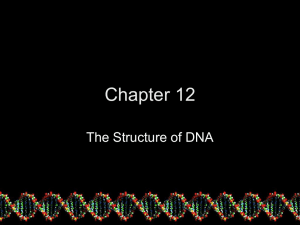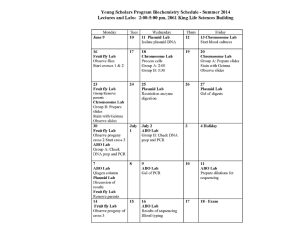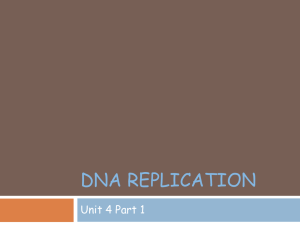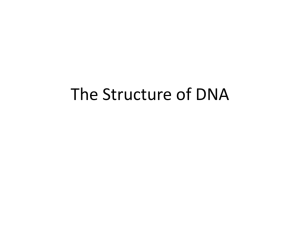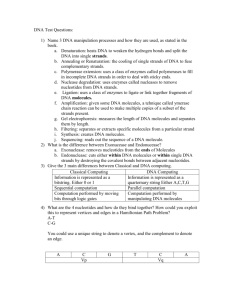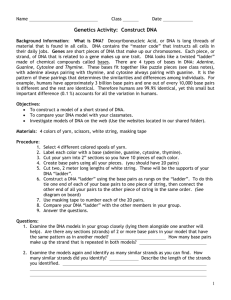12.2_The_Structure_of_DNA
advertisement
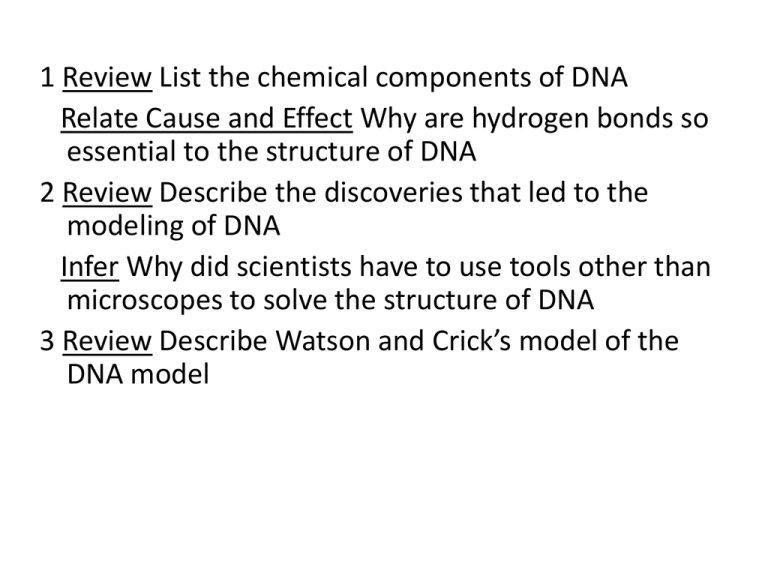
1 Review List the chemical components of DNA Relate Cause and Effect Why are hydrogen bonds so essential to the structure of DNA 2 Review Describe the discoveries that led to the modeling of DNA Infer Why did scientists have to use tools other than microscopes to solve the structure of DNA 3 Review Describe Watson and Crick’s model of the DNA model CH 12 DNA 12.2 The Structure of DNA Nucleic Acids and Nucleotides DNA nucleotides are made up of Deoxyribose Phosphate Nitrogen base DNA has four kinds of nitrogenous bases Adenine (A) Thymine (T) Guanine (G) Cytosine (C). Nucleic acids are a chain of nucleotides Nucleotides can be joined in any order. Solving the Structure of DNA Chargaff’s Rules Percentages of adenine [A] and thymine [T] bases are almost equal in any sample of DNA Same with guanine [G] and cytosine [C] A=T C=G. Franklin’s X-Rays X-ray diffraction X-shaped pattern showing that the strands in DNA are twisted Angle of the X-shaped pattern suggested two strands Width of X suggested width. Watson and Crick Used clues from Franklin’s X-ray Used Chargaff’s rules Proposed structure for double helix. The Double-Helix Model Antiparallel Strands Hydrogen Bonding Base Pairing. Antiparallel Strands Two strands of DNA run in opposite directions A-T-C-G-C-G-A-T T-A-G-C-G-C-T-A Hydrogen Bonding Relatively weak chemical bonds Allows for two strands to separate. Base Pairing A binds with T C binds with G. 1. 2. 3. Interpret Tables Which organism has the highest percentage of adenine Calculate If a species has 35% adenine in its DNA what is the percentage of the other three bases What did the fact that A and T, and C and G, occurred in equal amounts suggest about the relationship among these bases



